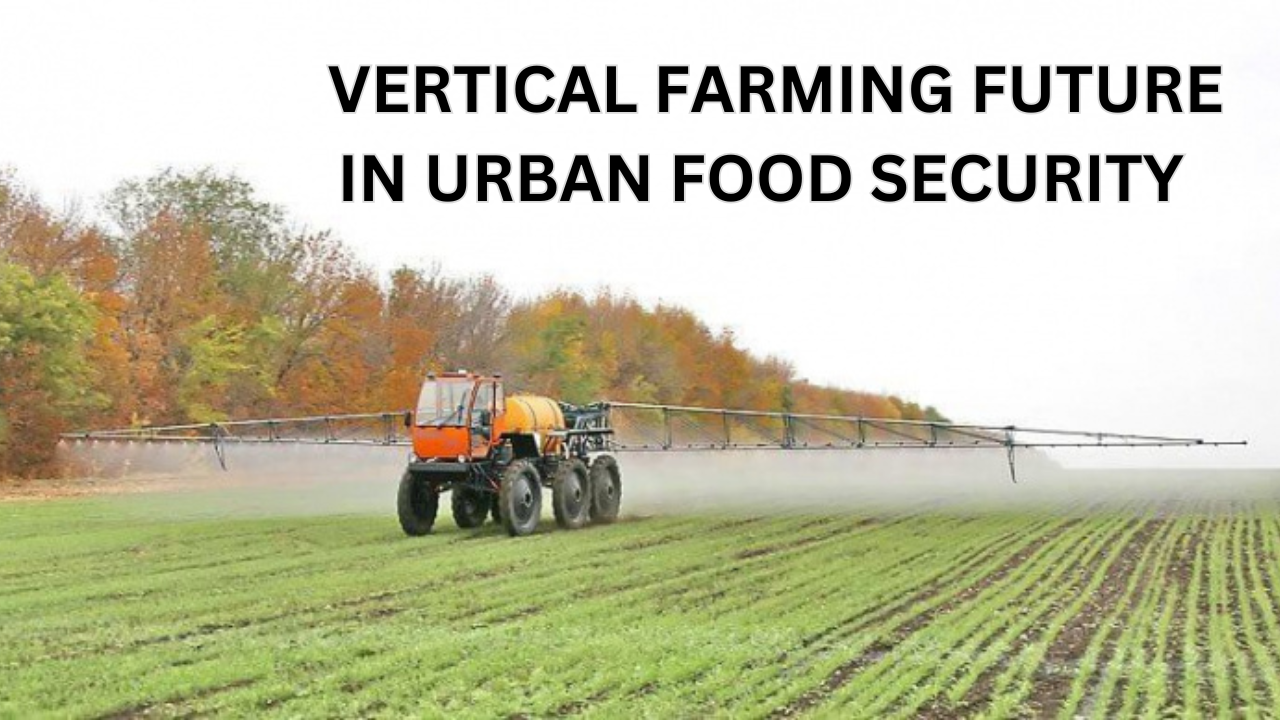Vertical farming represents a transformative solution to the challenges of urban food security in an increasingly crowded world as cities expand and arable land diminishes traditional agricultural practices that struggle to meet the growing demand for fresh sustainable and locally sourced food vertical farming cultivates crops in vertically stacked layers or controlled indoor environments leverages advanced technologies like hydroponics and artificial lighting to maximize yield and resource efficiency.
This innovative approach not only reduces the environmental impact of agriculture by minimizing water usage land requirements and transportation emissions but also ensures year-round crop production regardless of external weather conditions by bringing food production closer to urban centers vertical farming reduces supply chain vulnerabilities and fosters resilience against disruptions such as climate change and global pandemics.
The integration of renewable energy sources and automation enhances the scalability and cost-effectiveness of these systems making them a promising component of future urban planning while challenges like high initial investment and energy demands remain continuous advancements in technology and growing awareness of sustainable practices indicate that vertical farming could play a pivotal role in feeding urban populations its potential to revolutionize agriculture positions it as a cornerstone of a more secure and sustainable food system.
Benefits of Vertical Farming:
Vertical farming offers a range of significant benefits that address some of the most pressing challenges in modern agriculture and urban development by growing crops in vertically stacked layers or controlled indoor environments this innovative approach maximizes the use of space making it ideal for urban areas where land is scarce it significantly reduces the need for arable land which is increasingly under pressure from urbanization deforestation, and climate change vertical farming uses advanced methods like hydroponics to grow crops without soil cutting water usage by up to 90% compared to traditional farming this efficiency is vital in regions facing water scarcity.
Another key benefit is the reduction of transportation costs and emissions as vertical farms are often located close to urban centers ensuring fresh locally produced food for city populations the controlled environment of vertical farms eliminates the need for harmful pesticides and herbicides resulting in cleaner and healthier produce these farms can operate year-round regardless of weather or season providing a consistent food supply and reducing the risk of crop failures due to climate-related issues.
Types of Vertical Farming:
Vertical farming encompasses several types each employing unique techniques to optimize space and resource usage while ensuring efficient crop production the three primary types are hydroponics, aeroponics, and aquaponics each offering distinct advantages suited to different needs and conditions.
Hydroponics: It involves growing plants in a nutrient-rich water solution without soil this system allows precise control over nutrient delivery enabling faster plant growth and higher yields it also minimizes water waste by recycling the solution making it a highly efficient and sustainable option.
Aeroponics: This approach uses even less water than hydroponics and ensures optimal oxygenation of the roots promoting robust growth aeroponics is ideal for environments with limited water resources and is often praised for its ability to grow crops in smaller spaces with minimal waste.
Aquaponics: combines hydroponics with aquaculture the practice of raising fish in this system fish waste provides natural nutrients for the plants while the plants filter and clean the water for the fish this symbiotic relationship creates a closed-loop ecosystem that is both sustainable and productive aquaponics supports the cultivation of vegetables and fish simultaneously making it an excellent choice for diversified food production.
Each type of vertical farming has its strengths and the choice often depends on factors like available resources target crops and environmental conditions these methods showcase the versatility and innovation of vertical farming in addressing global food security challenges.
Urban Food Security Challenges:
Urban food security presents a complex set of challenges that are deeply intertwined with issues of poverty access sustainability and inequality as urban populations continue to grow the demand for affordable nutritious, and accessible food intensifies often outpacing the city’s ability to meet these needs in many cities food deserts areas where access to fresh produce and other nutritious foods is limited are a persistent issue these areas are typically underserved by grocery stores and markets leaving residents with limited options often relying on fast food or highly processed items that are detrimental to health.
The increasing cost of living housing shortages, and income inequality mean that many people particularly in low-income communities face difficulties in affording a balanced diet urban food security is also challenged by environmental concerns such as climate change which disrupts local food systems reducing the availability of locally grown produce global supply chains while efficient can be vulnerable to economic shocks political instability or natural disasters affecting food prices and availability to address these challenges cities need comprehensive strategies that involve not only improving access to food.
